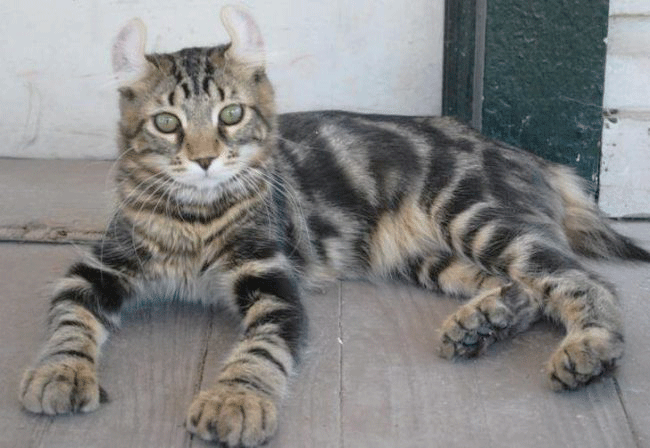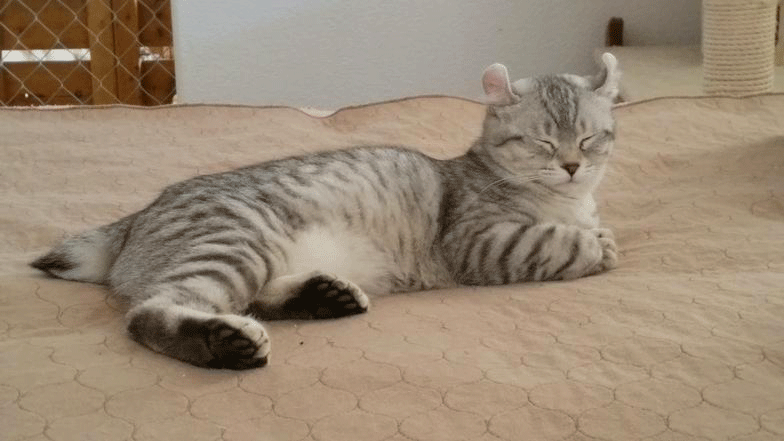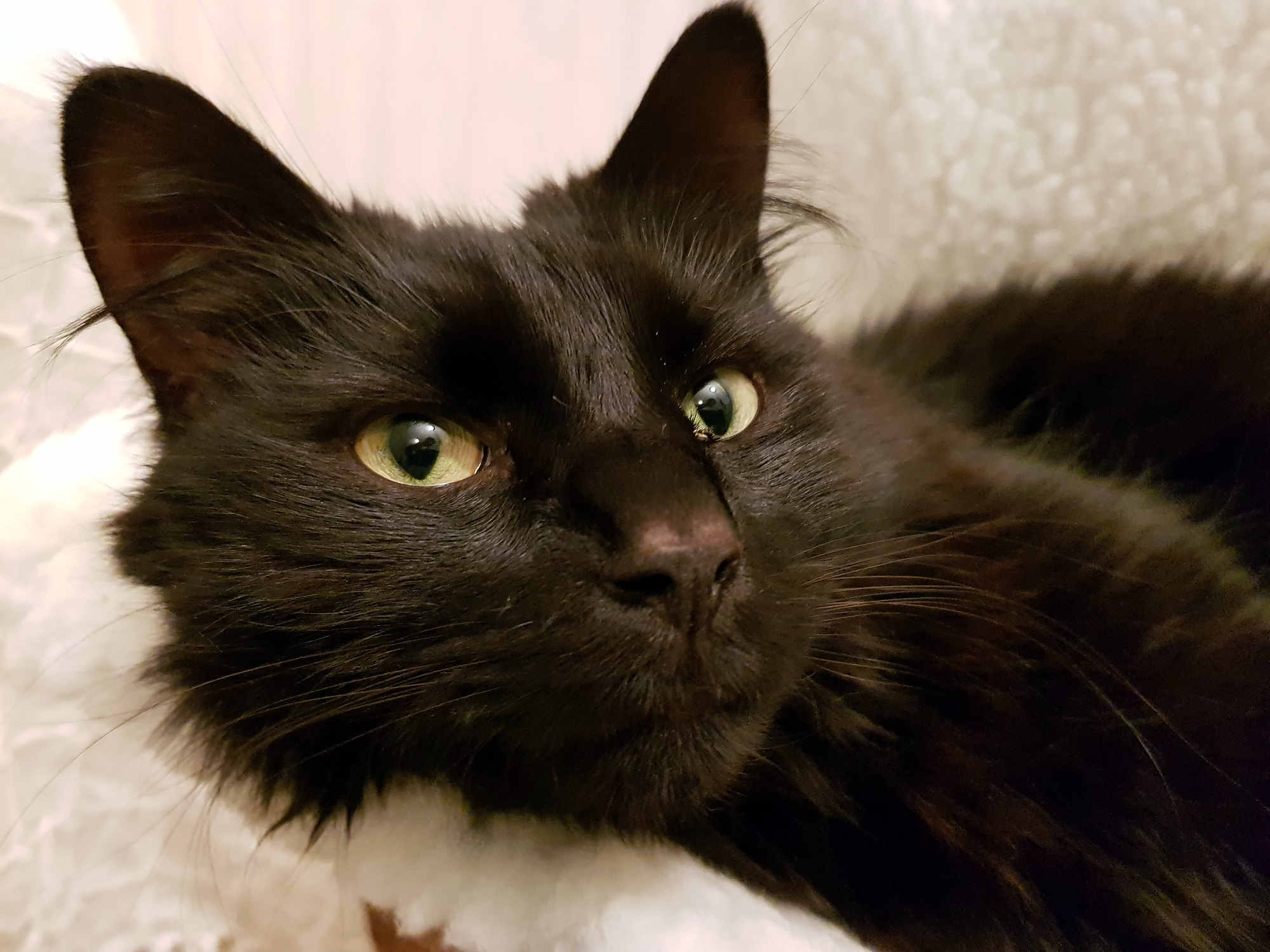The agile and stocky Highlander Cat (known originally as the Highland Lynx or Highlander Shorthair), is an experimental breed of cat
derived from the Desert Lynx and the Jungle Curl breeds. The Jungle Curl itself is a new breed of feline derived from ‘wild cat’ ancestry –
namely two Asian small cat species, the Leopard cat and the Jungle cat). No wonder then that the Highlander was bred to look like a ‘Big Cat’
in minature.
Cat of the Month ~ July 2018

Photograph: http://www.animalzoo.ro
In ‘expert’ speak the highlander is a ‘feline hybrid’ or ‘cross’ between Felis catus × F. chaus X Prionailurus bengalensis).
According to the main breeder, the Highlander breed refinements began in 2004, with the aim of:
- ‘producing a domestic cat with the look of a big cat’
- ‘providing a means to distinguish the breed from its foundation stock’
- ‘to seek competition status in major breed registries’
The name Highlander was adopted in late 2005, and by May 2008 the breed was recognized by The International Cat
Association (TICA) for competition in the ‘Preliminary New Breed’ class, moving up to ‘Advanced New Breed’in 2016.
TICA divides Highlanders into two varities, under the names Highlander Shorthair (HGS) and simply Highlander (HG) for the longer-haired variation.
The breed is now classified by REFR (Rare and Exotic
Feline Registry) as part of the Desert Lynx breeding group, which also includes the Desert Lynx, the Alpine Lynx, and the Mojave Bob.
Though the Highlander is mainly of domestic stock origin it has distinct features from its composite breeds,
for example the curled ears and the bobbed tail. The curled ears are of course from the Jungle Curl cat whilst the
bobbed tail is from the Desert Lynx. In addition these cats have spotted or marbled markings, and do resemble
a small bobcat. A further unusual feature of these cats is the Polydactyl claws in which an extra and separate toes grows on each paw.

Photograph: canyonshadowhighlanders.com
The Highlander has a long sloping forehead and blunt muzzle with a very wide nose. The eyes are wide-set and the ears
are upright with a slight curl and a slight backward lilt. A strange feature whihc some of these cats posess is
polydactyl paws whihc can be described as a prominent split between toes.
Highlanders have no known health problems, and are fond of water. The body is substantial and very muscular. Females can grow to between 10 and 14 pounds, and the males between 15 and 20 (or about as heavy as a Dachshund). Despite the “big-cat look”, the Highlander is a human-oriented, friendly and playful cat, and very active and confident. The Highlander displays tabby/lynx point or solid point coloration in various colors.
Highlanders might look like minature big cats look but they are very gentle creatures (if any cat can be totally gentle)! Like many cats they are highly energetic and will chase and stalk anything moving. They are also curious and friendly when it comes to meeting human strangers
In January 2019, the TICA board will review the Highlander Breed Group’s request to advance to a Championship Breed.
Finally, for some good highlander footage (and cute~~ commentary heres a little video made in the USA by Cats101

